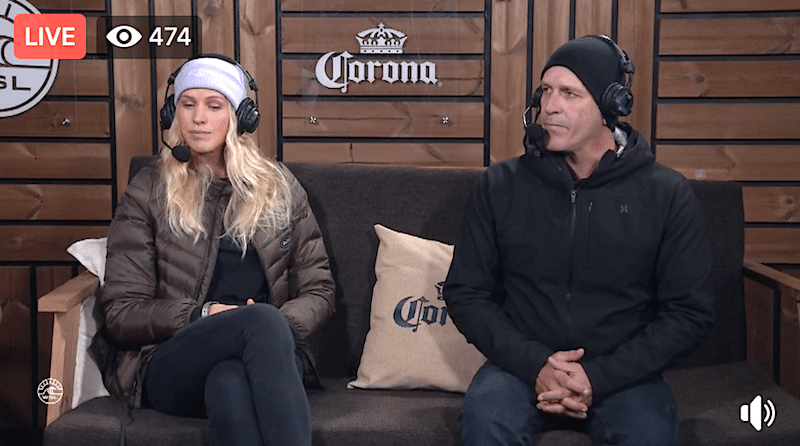An unexpected growth market!
Oh I do know that the World Surf League’s Facebook rollout was much ballyhooed and maybe even historically ballyhooed but there were some great moments. Some fantastic moments, even, caught in amongst the glitches and angry emoji face storm. Like, tracking the number of people watching professional surfing at the very same exact time that you yourself were watching professional surfing.
The number hung up there in the corner moving from the low 2000s to the upper 7000s or the upper hundreds to the mid 3000s (depending on the sex of the surfers). Always a reminder that you are not alone in your passions. Literally thousands (upper hundreds at worst) of others, dotted around this fractured globe, sharing time alone together.
I think thousands of people is so very many but the World Surf League was, apparently, embarrassed and issued a statement that read:
There has been much conversation about the concurrent viewership number displayed in the top-left corner of our live broadcast.
The number displayed on your stream does not represent the total concurrent audience viewing the event. Because we’re serving localized ads against our programming, what you’re seeing is the audience total for the regional stream that you’re connected to.
The total cumulative audience will be defined as the summation of all regional streams across all platforms and connected devices.
In short, what you’re seeing is a much lower number of people viewing than actually are.
Except… by setting up virtual private networks (VPNs) around the fractured globe a lonely boy or girl could theoretically test this assertion, right? Well, it turns out that the “number displayed not representing the total concurrent audience viewing the event” never changed. A true miracle that the same exact number of people were watching professional surfing at the exact same time in Europe, in Australia, in North and in South America and, maybe surprisingly, on the great subcontinent.
Of course this does not account for the thousands more watching on their temporarily reborn WSL app but I think the World Surf League should not be ashamed. I think they should be thrilled by the continuity.
Also, they should be thrilled by professional surfing’s growth in the second and sixth most populous country on earth.
India and neighboring Pakistan!
It seemed a good 75% of the “likes” on the live Corona J-Bay Women’s Open feed came from this region and this, alone, should have been enough to send champagne corks flying into the air at the WSL’s Santa Monica headquarters. Herr Paul Speaker was right! Billions and billions will soon be enjoying professional surfing!
What a red letter day.


Etc!






